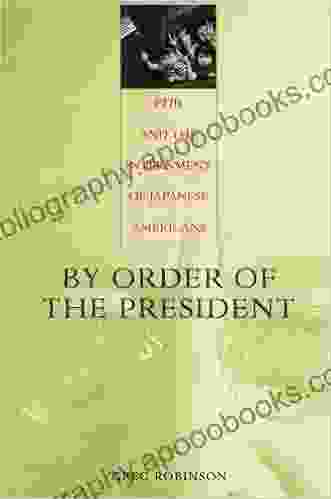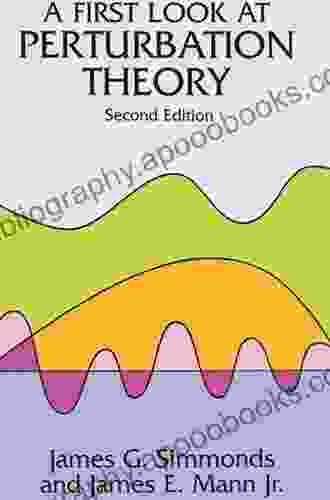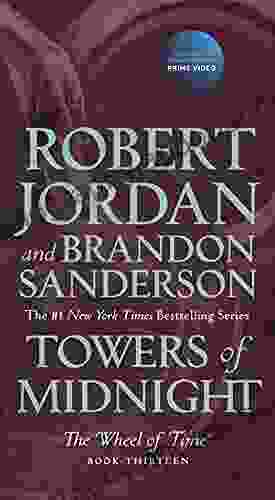First Look at Perturbation Theory: Unveiling the Complexity of Quantum Systems


Perturbation theory is a powerful mathematical tool that enables physicists to probe the enigmatic realm of quantum systems. It provides a systematic approach to understanding the behavior of complex systems by breaking them down into simpler, more manageable components. This article offers a comprehensive overview of perturbation theory, exploring its historical roots, fundamental concepts, and wide-ranging applications in quantum physics.
4.7 out of 5
| Language | : | English |
| File size | : | 9969 KB |
| Text-to-Speech | : | Enabled |
| Screen Reader | : | Supported |
| Enhanced typesetting | : | Enabled |
| Print length | : | 160 pages |
| Lending | : | Enabled |
| X-Ray for textbooks | : | Enabled |
Historical Origins
The seeds of perturbation theory were first sown in the early 19th century with the work of Joseph-Louis Lagrange on celestial mechanics. Lagrange developed a method for solving differential equations that describe the motion of planets around the sun, introducing the principle of small perturbations. This concept laid the foundation for the later development of perturbation theory in quantum physics.
In the 20th century, perturbation theory gained prominence in the hands of renowned physicists such as Niels Bohr, Erwin Schrödinger, and Max Born. They recognized its potential in quantum mechanics, where systems can exhibit complex interactions that defy analytical solutions. Perturbation theory provided a means to approximate these solutions and gain insights into the behavior of quantum particles.
Fundamental Concepts
Perturbation theory is based on the idea that a complex system can be divided into two parts: an unperturbed system and a perturbation. The unperturbed system is a simplified version of the actual system, while the perturbation represents the deviation from the ideal case.
The perturbation expansion is a series representation of the solution to the quantum problem. It involves breaking down the solution into a sum of terms, each of which corresponds to a different Free Download of perturbation. The zeroth-Free Download term represents the unperturbed system, while the higher-Free Download terms account for the effects of the perturbation.
The convergence of the perturbation expansion is crucial for its validity. In certain cases, the expansion may only be valid for sufficiently small perturbations. However, there are also techniques, such as resummation, that can enhance the convergence and extend the range of applicability of perturbation theory.
Applications in Quantum Physics
Perturbation theory has a wide array of applications in quantum physics, including:
Atomic and Molecular Physics: Perturbation theory is used to calculate energy levels, transition probabilities, and other properties of atoms and molecules. It helps explain phenomena such as the fine structure of atomic spectra and the molecular vibrations responsible for infrared absorption.
Solid State Physics: In solid state physics, perturbation theory is employed to investigate the electronic structure of solids. It allows for the calculation of band structures, which determine the electrical and thermal properties of materials.
Nuclear Physics: Perturbation theory is used to study nuclear reactions and nuclear structure. It provides a framework for understanding the interactions between nucleons and the properties of atomic nuclei.
Particle Physics: Perturbation theory is a cornerstone of the Standard Model of particle physics. It enables physicists to calculate scattering cross-sections and other observables, providing insights into the fundamental interactions of elementary particles.
Examples
To illustrate the utility of perturbation theory, let's consider an example from atomic physics. The energy levels of hydrogen atoms can be calculated using perturbation theory, starting with the unperturbed system of a single electron in a Coulomb potential. The perturbation is the relativistic correction due to the electron's motion, which can be treated as a small perturbation.
Another example from solid state physics involves the study of phonons, the quanta of lattice vibrations. Perturbation theory can be used to calculate the phonon dispersion relation, which describes the frequency of phonons as a function of their wavevector. This information is essential for understanding the thermal and transport properties of solids.
Advantages and Limitations
Perturbation theory offers several advantages:
Analytical Solutions: It provides analytical solutions to quantum problems that may not be solvable exactly.
Physical Insights: Perturbation theory allows for a qualitative understanding of the effects of various interactions on the system.
Computational Efficiency: For sufficiently small perturbations, perturbation theory can be computationally efficient, making it suitable for large systems.
However, perturbation theory has its limitations:
Convergence Issues: The expansion may not converge for all systems or all Free Downloads of perturbation.
Non-Analytic Solutions: In certain cases, the perturbation expansion may not yield analytical solutions, requiring numerical techniques.
Breakdowns: Perturbation theory can break down when the perturbation is too large or when there are strong non-linear effects.
Perturbation theory is an indispensable tool in quantum physics, offering a systematic and powerful approach to understand complex systems. It enables physicists to gain insights into the behavior of atoms, molecules, solids, and subatomic particles, providing a foundation for a wide range of applications in science and technology. While it has limitations, perturbation theory continues to be a vital tool for exploring the intricate workings of the quantum world.
4.7 out of 5
| Language | : | English |
| File size | : | 9969 KB |
| Text-to-Speech | : | Enabled |
| Screen Reader | : | Supported |
| Enhanced typesetting | : | Enabled |
| Print length | : | 160 pages |
| Lending | : | Enabled |
| X-Ray for textbooks | : | Enabled |
Do you want to contribute by writing guest posts on this blog?
Please contact us and send us a resume of previous articles that you have written.
 Book
Book Novel
Novel Page
Page Chapter
Chapter Text
Text Story
Story Genre
Genre Reader
Reader Library
Library Paperback
Paperback E-book
E-book Magazine
Magazine Newspaper
Newspaper Paragraph
Paragraph Sentence
Sentence Bookmark
Bookmark Shelf
Shelf Glossary
Glossary Bibliography
Bibliography Foreword
Foreword Preface
Preface Synopsis
Synopsis Annotation
Annotation Footnote
Footnote Manuscript
Manuscript Scroll
Scroll Codex
Codex Tome
Tome Bestseller
Bestseller Classics
Classics Library card
Library card Narrative
Narrative Biography
Biography Autobiography
Autobiography Memoir
Memoir Reference
Reference Encyclopedia
Encyclopedia Mike Bartlett
Mike Bartlett David Wright
David Wright Paula Munier
Paula Munier Jonathan Littell
Jonathan Littell Janet Quinn
Janet Quinn Zoe Beth Geller
Zoe Beth Geller Dennis Deletant
Dennis Deletant David W Blight
David W Blight Dean Mosman
Dean Mosman Scott Kemp
Scott Kemp Laura M Brotherson
Laura M Brotherson John E Sarno
John E Sarno David Rowell
David Rowell John Brenkman
John Brenkman Tom Poland
Tom Poland David T Beito
David T Beito Tiya Miles
Tiya Miles Mari Silva
Mari Silva Deborah Pacini Hernandez
Deborah Pacini Hernandez Teuvo Pakkala
Teuvo Pakkala
Light bulbAdvertise smarter! Our strategic ad space ensures maximum exposure. Reserve your spot today!

 Craig CarterFDR and the Internment of Japanese Americans: A Comprehensive Exploration of...
Craig CarterFDR and the Internment of Japanese Americans: A Comprehensive Exploration of... Aron CoxFollow ·11k
Aron CoxFollow ·11k Ernest HemingwayFollow ·8.3k
Ernest HemingwayFollow ·8.3k George Bernard ShawFollow ·19.1k
George Bernard ShawFollow ·19.1k Rod WardFollow ·15.1k
Rod WardFollow ·15.1k Jermaine PowellFollow ·8.9k
Jermaine PowellFollow ·8.9k Leo MitchellFollow ·4.9k
Leo MitchellFollow ·4.9k Jacob HayesFollow ·4.5k
Jacob HayesFollow ·4.5k Dean CoxFollow ·15.4k
Dean CoxFollow ·15.4k

 Finn Cox
Finn CoxEmpowering School-Based Professionals: A Comprehensive...
: The Role of School-Based Professionals in...

 F. Scott Fitzgerald
F. Scott FitzgeraldThe Santa Fe Trail Twentieth Century Excursion: A...
Get ready to embark on an...

 Kendall Ward
Kendall WardThe Ultimate Trivia Guide to Bruce Springsteen and the...
Bruce Springsteen...

 Jedidiah Hayes
Jedidiah HayesThe Trouble with Lacy Brown: Texas Matchmakers - A...
Prepare to be swept...
4.7 out of 5
| Language | : | English |
| File size | : | 9969 KB |
| Text-to-Speech | : | Enabled |
| Screen Reader | : | Supported |
| Enhanced typesetting | : | Enabled |
| Print length | : | 160 pages |
| Lending | : | Enabled |
| X-Ray for textbooks | : | Enabled |














